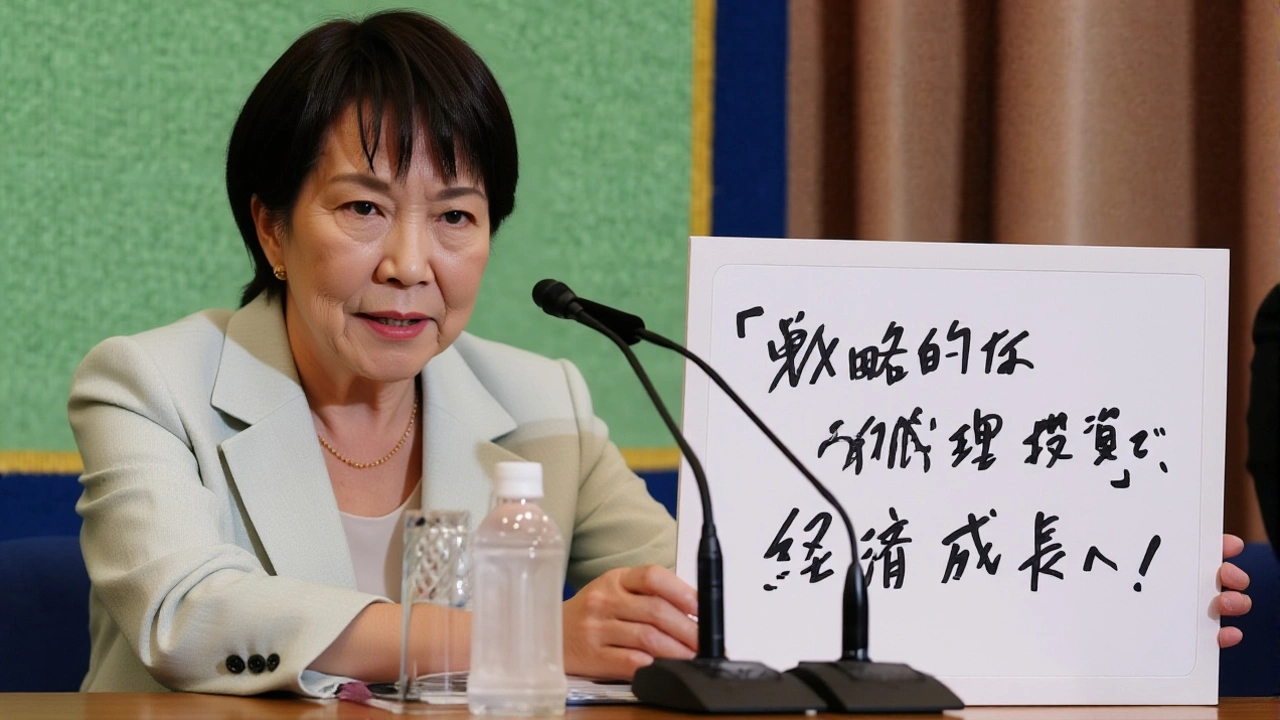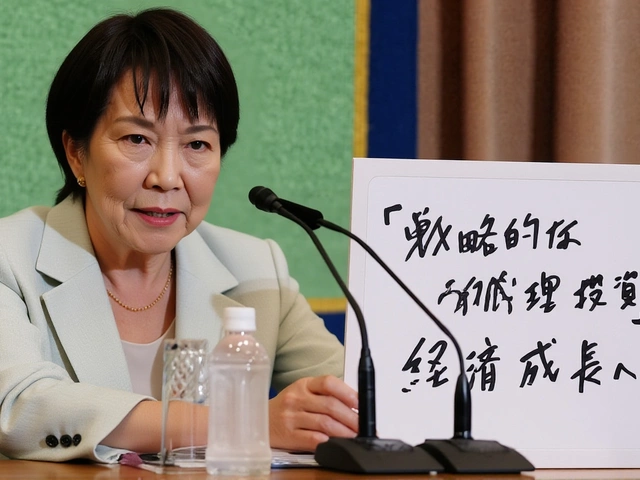When Sanae Takaichi, president‑elect of the Liberal Democratic Party LDP clinched the party’s top post on October 4, 2025, Japan’s political scene lit up like a stadium on game night. The hard‑line conservative edged out agricultural minister Shinjirō Koizumi in a runoff, sealing a 54.25% to 45.75% victory that catapults her toward becoming the nation’s first female prime minister. The win ends a short‑lived tenure by Shigeru Ishiba, who stepped down after less than a year amid soaring consumer prices and mounting pressure from opposition parties.
Background of the LDP Leadership Race
The LDP’s leadership contest was triggered by Ishiba’s resignation announcement on September 10, 2025. With the party holding a commanding majority in the National Diet, the stakes were massive: whoever secured the LDP presidency would almost inevitably become Japan’s next prime minister. Early polls from the NHK and Asahi Shimbun showed Takaichi and Koizumi locked in a near‑tie, each hovering around 30% support among party lawmakers.
Both candidates campaigned on reviving the economy, but their styles diverged sharply. Koizumi, the son of former prime minister Junichirō Koizumi, leaned on his agricultural roots and promised modest reforms. Takaichi, a veteran of Shinzo Abe’s cabinet, projected a tougher stance on fiscal stimulus and immigration, while trying to soften her image by branding herself a “moderate conservative.”
Vote Count and Runoff Details
The first round, held at the LDP headquarters in Tokyo, saw Takaichi lead with 183 votes (31.07%). Koizumi followed with 164 votes (27.84%). No one crossed the 50% threshold, so a second‑round ballot was set for October 4.
- First round: Takaichi 183, Koizumi 164, others split the remaining 252 votes.
- Runoff: Takaichi 54.25% (322 votes) vs. Koizumi 45.75% (272 votes).
- Total LDP lawmakers voting: 594.
After the runoff, Takaichi delivered a terse victory speech, noting, “Rather than celebrating, I feel the tough work starts now. We have a ton of policies to execute quickly.”
Takaichi’s Political Profile
Born March 7, 1961, Takaichi has worn many hats in Japanese politics. She served as Minister of State for Okinawa and Northern Territories Affairs, Science and Technology Policy, Innovation, Youth Affairs and Gender Equality, and Food Safety under Abe’s administration. Her résumé also includes a stint as Economic Security and Internal Affairs Minister, where she championed an expansionary fiscal agenda.
During the campaign, she sidestepped a hot‑button question about visiting the controversial Yasukuni Shrine as prime minister, choosing instead to focus on “real‑world” issues like price‑inflation relief and stricter migration controls.
Professor Tina Barrett, a political science scholar at Sophia University, argued, “Takaichi’s election probably reflects a shift toward a more nationalist brand of politics that has been simmering since the 1990s.”
Reactions From Within and Outside the Party
Party elders expressed a mix of relief and caution. Veteran LDP heavyweight Nobuo Kishi praised Takaichi’s “steady hand,” while younger lawmakers warned that her hard‑line rhetoric could alienate urban voters already disillusioned by rising living costs.
Opposition leader Fumio Kishida (who also happens to be a former LDP prime minister) said, “The electorate deserves policies that tackle inflation, not more nationalist posturing.” International observers, including analysts at Bloomberg, flagged potential market volatility, noting that investors will be watching her promised stimulus measures closely.
Implications for Japan’s Economy and Foreign Policy
If Takaichi follows through on her expansionary fiscal plan, the Bank of Japan could see a renewed push to keep interest rates ultra‑low, a move that may spur short‑term growth but also risk reigniting deflation concerns.
Her stricter stance on migrants is likely to tighten Japan’s already tight immigration framework, a decision that could aggravate labor shortages in sectors like construction and caregiving. On the security front, Takaichi’s past support for stronger defense spending hints at a more assertive posture toward China and the Korean Peninsula.
Markets reacted within hours of the announcement: the Nikkei 225 edged up 1.2%, while the yen weakened against the dollar by roughly 0.6%, reflecting investor speculation about a more hawkish fiscal stance.
What Comes Next?
The LDP’s internal vote is just the first step. The party’s caucus in the Diet is slated to convene later in October to formally elect the prime minister. If Takaichi secures that vote—highly likely given the party’s dominance—she will be sworn in before the end of the month, making history as Japan’s first woman to hold the nation’s top post.
Her first 100 days will be under intense scrutiny. Will she deliver on stimulus promises or retreat to more conservative, incremental policies? How will she balance nationalist rhetoric with the practical needs of an aging population and slowing growth? Only time will tell, but one thing’s certain: Japan’s political compass has shifted, and the world is watching.
Frequently Asked Questions
How will Takaichi’s fiscal stimulus affect everyday Japanese citizens?
Her plan calls for targeted cash transfers to low‑income households and subsidies for small‑business energy costs. Early estimates suggest up to ¥30,000 per family, which could soften the impact of the 5% consumer‑price rise seen in the past year.
What does a stricter migration policy mean for Japan’s labor market?
Takaichi has pledged to tighten visa criteria and cap the number of overseas workers in construction and nursing. While this may appease nationalist voters, it could exacerbate shortages in sectors already relying on foreign labor, potentially driving up wages and prices.
Will Japan’s foreign relations change under Takaichi?
Her past support for a stronger Self‑Defense Forces suggests a more assertive stance, especially toward China’s maritime activities. However, trade‑dependent partners like the United States are likely to push for diplomatic balance, keeping Japan in the broader U.S.–Japan security framework.
What are the chances that the LDP will maintain its majority after this leadership change?
Current polls from NHK show the LDP at 31% support, up from 27% three months ago, indicating a modest rebound. If Takaichi can deliver on promised stimulus, the party could stabilize its base ahead of the July 2026 general election.
How historic is Takaichi’s potential appointment as prime minister?
She would be the first woman to lead the Japanese government since the post‑war era, breaking a 75‑year male‑only tradition and setting a new precedent for gender representation in Asian politics.

